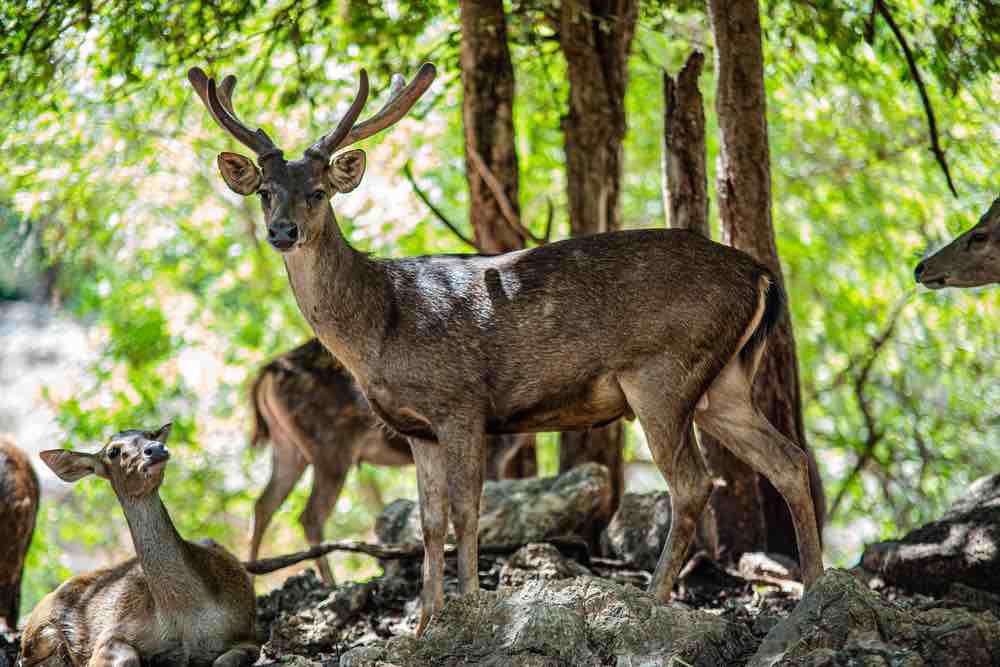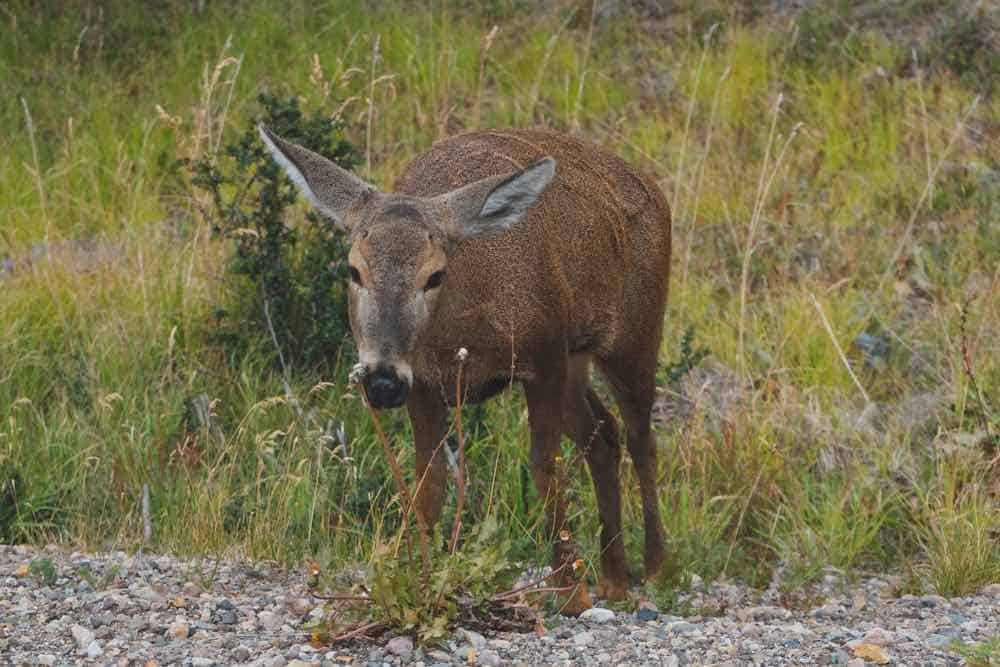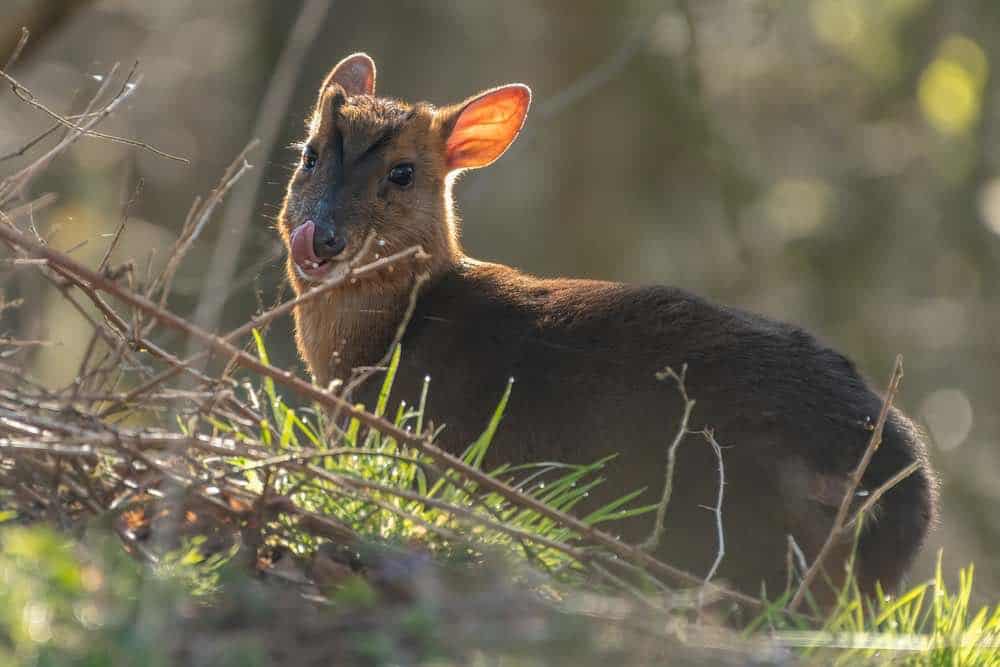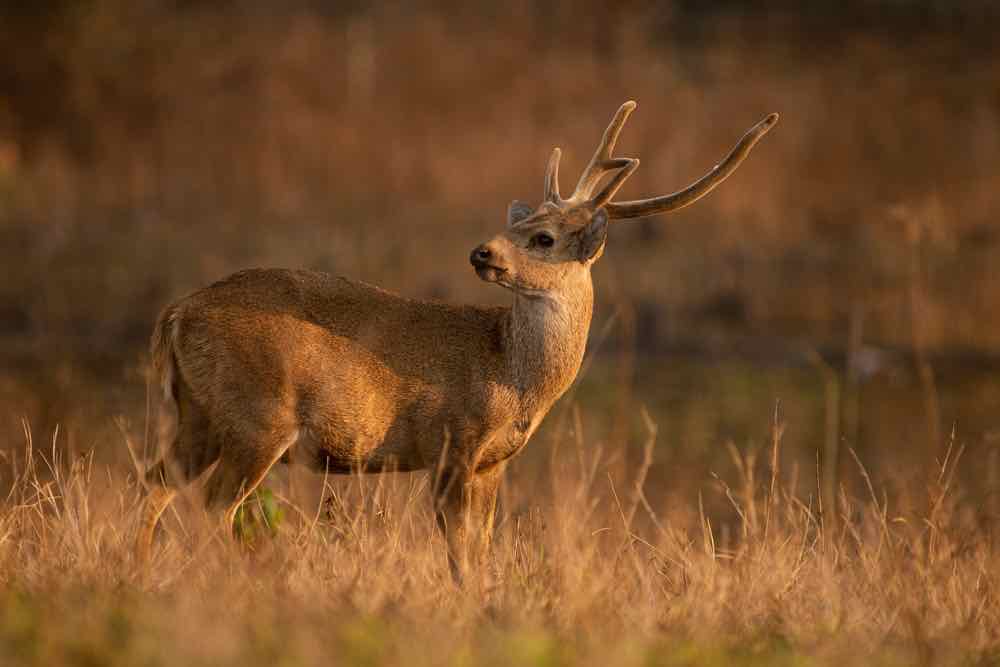The rusa deer, also known as the Javan rusa or the Sunda sambar, is an intermediate-sized sized species initially native to the Indonesian islands of Java, Bali and Timor. An adult male rusa deer can stand more than three feet at shoulder height, and can weigh nearly 300 pounds.

Read on to learn more about the rusa deer, including its dramatically expanded range, its place in the ecosystem and in the world of commerce, and how it is hunted.
The expanded range of the rusa deer
Rusa deer were spread beyond their initial range as humans recognized their value as a source of meat through both farming and hunting, and transported them beyond Java and Bali. Rusa deer now are found on a number of Indonesian islands, as well as in Australia, New Zealand, Samoa and Papua New Guinea.
Today, rusa deer are actively farmed in Australia and on the island nation of Mauritius, and they can be hunted as a trophy species in places as far away from their initial range as North America.
The life of the rusa deer

Rusa deer can be found in a variety of habitats across both their native and artificially expanded ranges. They will live anywhere from forests to shrublands to mountains and even in marshy areas. In general, though, rusas prefer open grassy areas, which provide for easy grazing.
As largely nocturnal animals, rusas like to have dense woodlands or brushy areas near their preferred grazing lands. Those more sheltered areas provide rusas with a safe place to stay during daylight hours.
In terms of feeding, rusa deer prefer to eat grasses, but in seasons where those grasses aren’t plentiful, or when weather conditions deplete grasses, they will eat other vegetation.
Rusa deer have a distinctive appearance
While it may not be particularly noted for its size, the rusa deer is marked by a distinctive appearance among deer species. Its fur can range from grayish brown to reddish brown in color, with darker fur on its thighs and hindquarters.
The underside of the rusa deer is marked by cream-colored or gray fur, and the animal has a long black-tipped tail. Males grow three-tined and spiked antlers, and also will exhibit a dark mane during winter.
Rusa deer live in segregated herds
Rusa deer live in herds of about two dozen individuals. Interestingly, those herds are segregated by sex. Male and female rusas only interact during mating season, which is primarily in autumn, but can begin as early as June. Female rusas can produce as many as three calves in a two-year period.
Male rusas have been observed to be less aggressive with each other than males of other deer species. Instead of fighting, male rusas engage in a rudimentary form of plowing, during which they scoop up vegetation with their antlers.
As part of that process, individual rusas will accumulate bundles of greenery on their antlers. The larger the bundle of greenery on an individual rusa’s antlers, the more dominant that individual is within the herd.
Hunting the rusa deer
Rusa deer can be hunted successfully with both rifle and bow, from the ground and from concealment in trees. In some places, rusa deer can be bagged in a driven hunt. A driven hunt involves have people guide the animals toward a group of waiting hunters, virtually assuring each hunter a shot or two at a trophy deer.
Best times for hunting rusa deer
There are two times each year when rusa hunting is at its best. During the spring, rusas are likely to emerge from the forest to feed on emerging vegetative growth in more open areas. Another opportune time for rusa hunting is the mating season, when male rusas are less cautious about their surroundings.
Rusas are medium-sized deer, which means that any rifle capable of shooting the popular and widely available .243-caliber round is an appropriate weapon with which to hunt them.
Focus on open areas
Other tips for hunting rusas include focusing on open areas where the deer are likely to come to graze, using thick vegetation in adjacent forestland to conceal your presence. It’s also advisable to stop frequently and survey the terrain as you’re moving through a vegetated area, because rusas are adept at hiding in those places.
Experts also advise hunting rusas in either the late afternoon or the early morning, due to the fact that the deer are largely nocturnal animals. As a result, they often will be active in the times just before nightfall and just after sunrise.
Hunters should be particularly alert when a single rusa is spotted, because they often travel in groups, and other rusas may be nearby. Also, experts say, rusa hunters should be prepared to make long shots to bag one of the deer, since they are most likely to be spotted while feeding at some distance away.
Commercial uses of the rusa deer
While the major commercial use of the rusa deer comes from sales of its meat from the places where it is farmed, its antlers also are a prized commodity.
Rusas shed their antlers between October and February, during which time the antlers are collected and sold for their value in traditional Asian medicine. In that arena, rusa antlers, like other deer antlers, are believed to help spleen and kidney health, strengthen muscles and even to address mumps in children.
Additionally, rusa antlers are used in jewelry production, and their hides also offer some income opportunities to the farmers who raise them.
Environmental hazards posed by the rusa deer
While the presence of the rusa deer in its range provides some benefits in terms of commercial activity, there are also some environmental hazards associated with the animal.
Those hazards perhaps are most keenly felt in agricultural entrprises. Wild rusa deer are capable of damaging an assortment of crops as they move across their range and also as they forage for food. That damage can also extend to farm infrastructure including fences and irrigation systems.
Damage to orchards
Fruit and nut orchards may be particularly susceptible to damage from rusas, as the deer eat tender shoots emerging as new growth from established trees. Rusas may also be responsible for “ringbarking” orchard trees, removing bark around the trunk and thus impeding the carrying of nutrients into the tree.
Dry weather may exacerbate the rusa’s impact on agricultural operations, as the deer may consume pasture grasses and other food intended for farm animals.
Beyond the rusa’s potential negative impact on the human-centered ecological world represented by agriculture, the deer can also have other negative impacts on the wider ecological system.
Threat to native plants and water quality
Like other deer, rusas are selective feeders, meaning that their browsing for food centers on particular species of plants. Over time, that can lower the variety of native plants in a given area. In terms of plants that are already ecologically threatened, rusas carry the potential for eliminating some plant species.
Additionally in the wild, the presence of rusas, as is the case with other deer species, can result in pollution of waterholes through fouling with bodily wastes. Rusas can also contribute to the spreading of weeds as seeds from their waste are deposited in new places.
Finally, if rusas overgraze an area, they can cause soil erosion, which in turn can lessen water quality in the creeks, rivers and other bodies of water into which those areas drain.
A pest species
In Australia, the rusa deer has caused enough environmental and agricultural damage to be recognized as a pest species. Particularly troubling for Australian officials is the assessment that the damage could increase as the rusa deer is expected to expand its population in the country.
Commercial uses of the rusa deer
While the major commercial use of the rusa deer comes from sales of its meat from the places where it is farmed, its antlers also are a prized commodity.
Rusas shed their antlers between October and February, during which time the antlers are collected and sold for their value in traditional Asian medicine. In that arena, rusa antlers, like other deer antlers, are believed to help spleen and kidney health, strengthen muscles and even to address mumps in children.
Additionally, rusa antlers are used in jewelry production, and their hides also offer some income opportunities to the farmers who raise them.
Wrapping up the rusa deer
We hope that this post has given you a thorough introduction to the rusa deer, expanding your knowledge of just one of the vast array of deer species to be found around the world.
To learn more about the amazing diversity of deer on this planet, check out these posts.



